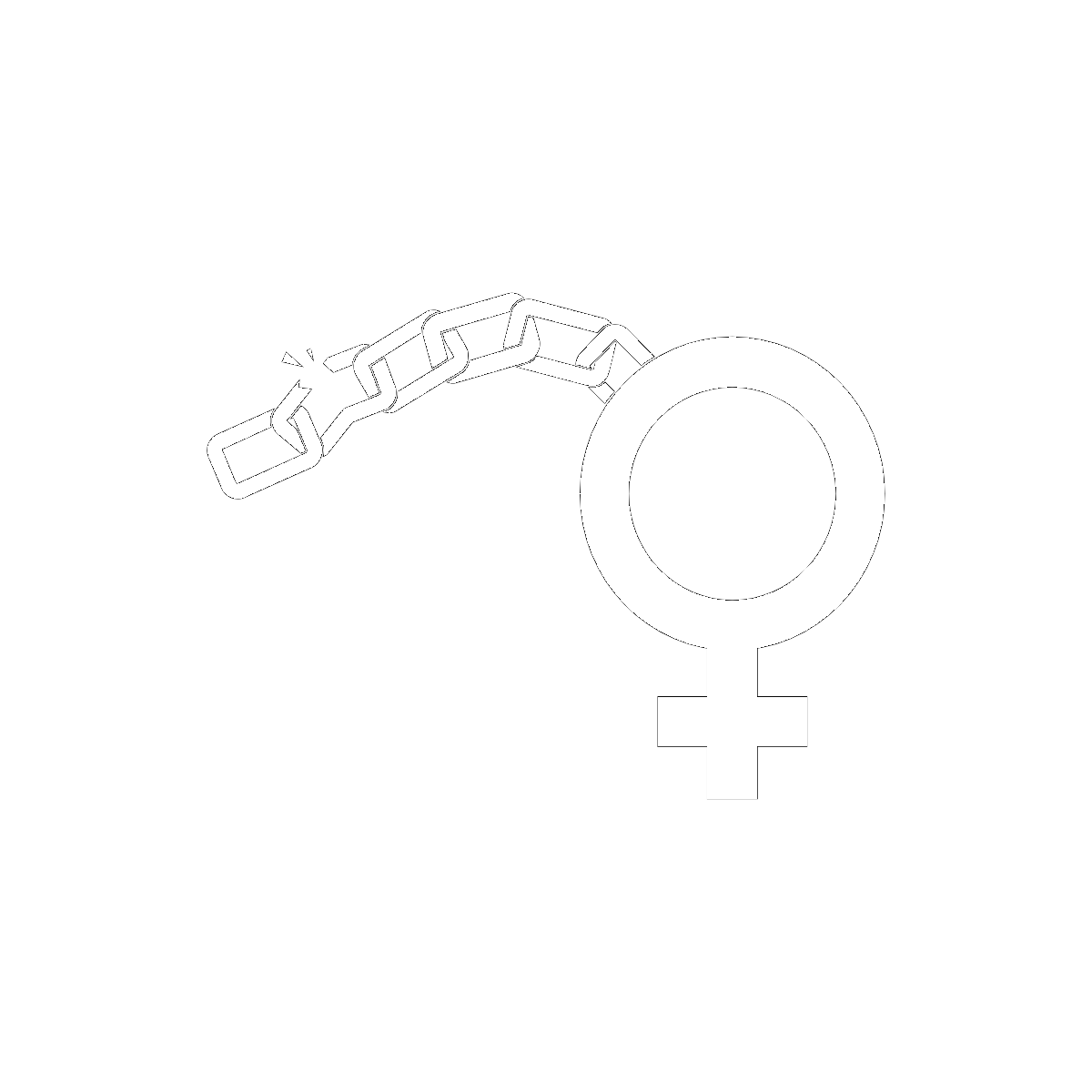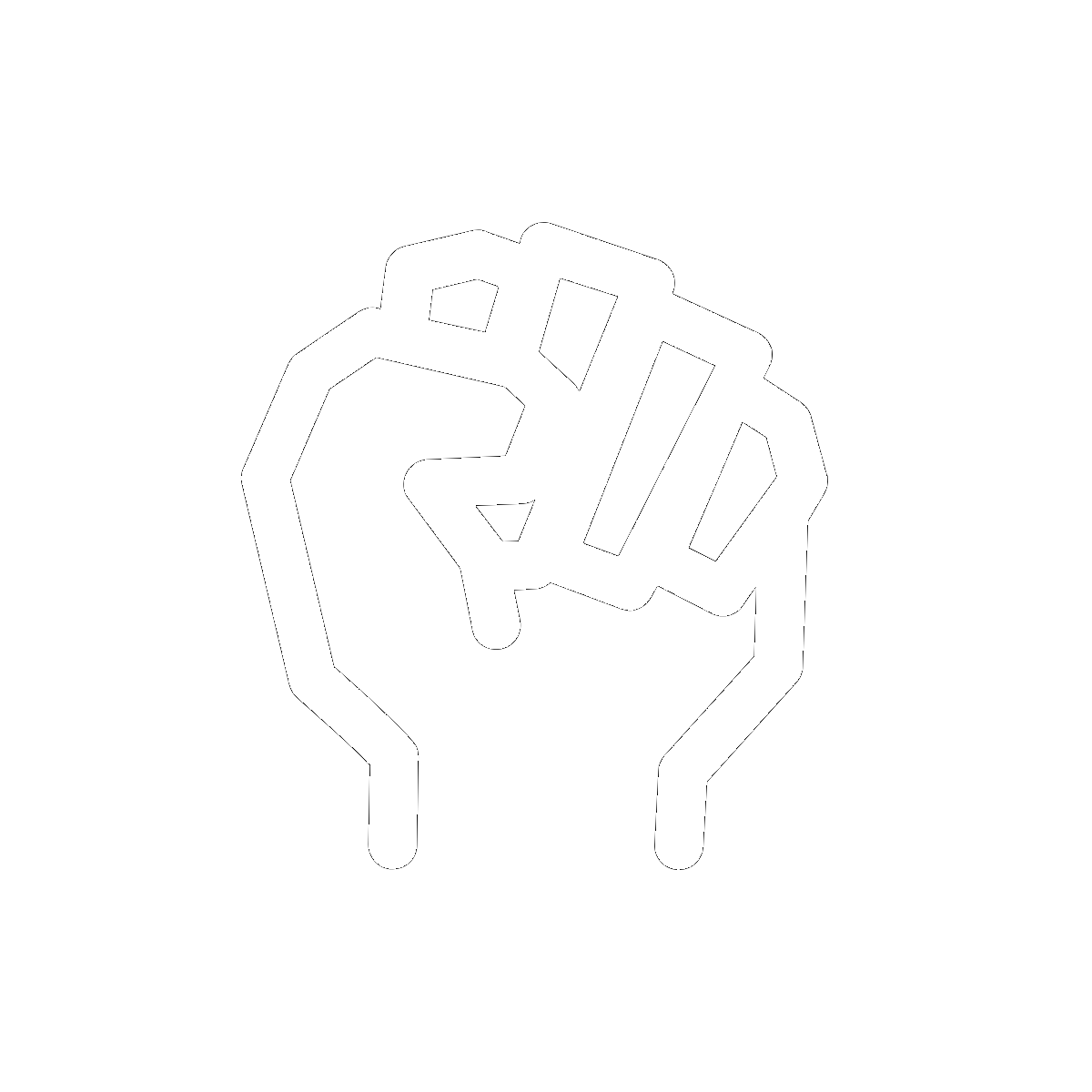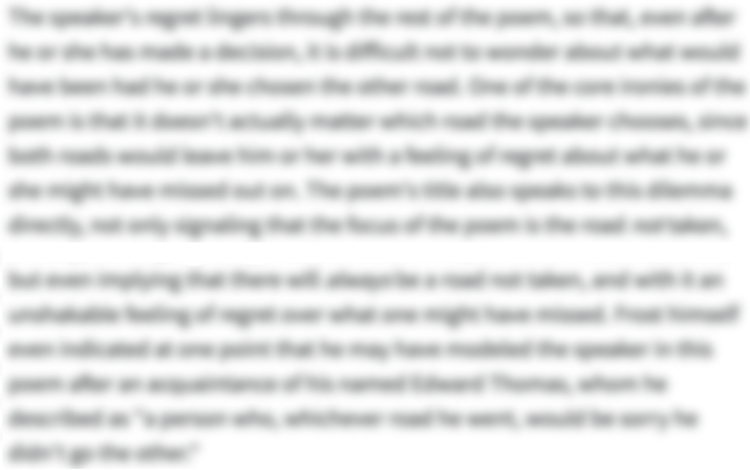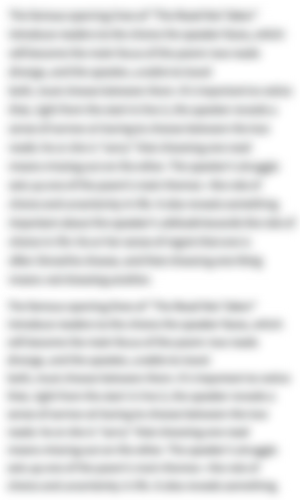-
“Half-Hanged Mary” Introduction
-
"Half-Hanged Mary" is Canadian writer Margaret Atwood's tale of patriarchal cruelty and powerful transformation. This dramatic monologue's speaker is Mary Webster, a 17th-century woman hanged for witchcraft in Puritan Massachusetts. Dangling from a tree, choking but not dying, Mary has plenty of time to reflect on the sadistic sexism that got her here—and when she's found alive the next morning, she truly becomes the powerful witch she was falsely accused of being before. This poem first appeared in Atwood's 1995 collection Morning in the Burned House.
-
-
“Half-Hanged Mary” Summary
-
The speaker, a woman named Mary Webster, remembers that there was plenty of free-floating paranoia in the air when she was arrested for witchcraft: it just needed a victim to attach itself to. Mary herself wasn't doing anything more dangerous than milking her cow at sunset, around 7 at night, when her accusers came to arrest her.
She remembers that she didn't have any inkling she was about to be arrested: the "bullet" of the accusation sunk into her body without a sound, her skin seeming to wrap around it much like a body of water smoothly envelops a stone that's been tossed in.
She was arrested and hanged not for any real crime, but for being a poor single woman eking out a living as a farmer and a healer.
And of course, she adds, she had a woman's body—and in her world, that always made it easier to accuse someone of dealings with the devil.
Mary reflects that when the men came to arrest her an hour later, they brought a noose on impulse: if they'd thought about it for a minute, they'd have planned to behead her instead.
Mary remembers being strung up from a tree like a rotting apple. She was gagged and her hands were tied; she felt like a flag paying tribute to the ancient moon goddess, to whom blood sacrifices were once made.
The men who hanged her, all worked up by their violence, hurried home, leaving Mary to bear the consequences of their hatred.
At 9:00 p.m., the townswomen came to gawk at Mary too, staring up at her with tight lips, wide eyes, and flaring nostrils, full of fear.
Mary remembers that she was once friends with several of them: she healed one woman's sick baby and gave an unmarried girl an abortion so that she wouldn't end up executed.
But none of these women were brave enough to cut her down, afraid that they'd only meet the same fate: women who help convicted witches will be treated as witches themselves. "Ravens," isolated, clever women like Mary, have to stand alone.
To stay safe, these women can only try to make themselves inconspicuous, and accuse other women to protect themselves.
Mary forgives these women, or at least understands them: in circumstances so desperate, they have to cling to what little security and comfort they can find, and not stick their necks out for other women.
Now, at 10:00 p.m., Mary turns to God, saying that since she's stuck up this tree and has a little free time away from her ceaseless chores, the two of them can continue their old argument about free will.
Mary asks God: Did I choose to hang from this uncaring tree? If nature reflects your divine will, how does this rope fit into the pattern?
She goes on: Does my agony somehow complete your grand plan for my life? These questions are sarcastic: she seems to see the traditional Christian virtues of Faith, Charity, and Hope dead, shooting across God's impassive face like falling stars or owls on fire.
Now it's midnight, and Mary feels herself choking, unable to breathe or speak, like she's just a bundle of strained, despairing muscle, blood, and teeth.
She feels Death sitting on her shoulder like a carrion bird, waiting to devour her eyes when her heart finally explodes.
But she also imagines death as a lecherous old judge, getting sexual satisfaction from punishing her.
Death also seems to her like a seductive black-winged angel, trying to coax her into taking things easy and surrendering her life, not suffering anymore.
Mary feels almost tempted to allow herself to be gobbled up by death and turn into one of the things these different metaphorical figures want her to be: food, garbage, or a martyr.
Giving into death would mean giving up her own separate identity and beliefs—her understanding of her own story. But it would mean a release from pain, too.
At 2:00 a.m., Mary hears herself, as if from a distance, praying in a thin whine—except, she says, that real prayer isn't choked off like hers is.
But then she asks God: is that true? Maybe praying is actually a lot like being choked and struggling for air. Mary wonders if the Apostles in the biblical tale of Pentecost also might not have felt so great about their involuntarily burning heads, babbling mouths, and bugged-out eyes.
That reminds her that her eyes are bugging out, too. She reflects that prayer isn't what people think it is: it's not about asking God for favors at bedtime. It's much more than that: it's a desperate cry for survival, something that rips its way out of people in their most painful moments, when even Heaven seems like it might collapse and crow-like angels croak.
At 3:00 a.m., Mary hears the wind in the leaves and feels as if the trees are emitting dark birds, which scream in her ears while her heart beats painfully. She hangs there, getting weaker, and hears the wind blowing through her body, ripping up the words she's clinging to. She doesn't have any magical charms or coins with her. She feels as if she's drowning and calls out for anyone who's listening to witness her declaration of her own innocence: she refuses to accept her unjust punishment. Trying to hang on, she declares that she won't surrender.
Finally, at 6:00 a.m., the sun rises—though it doesn't remind Mary of God anymore. She's been to the very verge of death and knows that the sun isn't what God is like at all.
Her overnight experience seems to have stretched her life out over eons.
Much as Mary would like to claim that her ordeal made her go gray, she says, it was actually her heart that went white from shock, like wet, rotting meat.
She's also taller now, having. been stretched out from the hanging. These, she says, are just the consequences of traveling through death, hearing the stars preach and looking out into the infinite, hearing nothing.
Having been forced to endure the unendurable, she can now talk about God's silence. But that doesn't mean she's ungrateful for what happened to her.
She's gained a special power: most people only die once, but she'll die twice.
When the townsfolk came back to cut her body down at 8:00 the next morning, Mary remembers, she was still alive.
Too bad for the townsfolk, she goes on: the law says you can't punish someone for the same crime twice, so she can't be hung again.
She remembers breathing in the smell of the grass and grinning horribly at the terrified men.
Now, she has a sinister power: when she looks at the men, they see their own hatred looking back at them, and run away from her.
She didn't use to be a witch, but through her hanging, she became one.
Since this ordeal, Mary says, her soft physical body seems to change shape around her real, inner body. She scurries around the countryside talking to herself and eating blackberries, and the villagers run from her.
Her death floats around her like a cloud, a souvenir of her suffering that keeps everyone away.
Ever since she was unjustly hanged, she's had the freedom to say anything she wants.
Even though she's dirty, she feels as if she's shining. She isn't troubled by eating flowers, mice, and cowpats, feeling as if these are all different versions of the same basic substance. Her curses float behind her like bubbles; she speaks to the owls in languages no one can understand.
But mostly, she speaks to God, who's the only person who gets what she's talking about: no one else has had two deaths.
Mary feels her words spilling out of her, full of all the power, possibility, and paradoxical emptiness of the universe.
-
-
“Half-Hanged Mary” Themes
-

Misogyny and Oppression
When the titular speaker of “Half-hanged Mary” gets hauled away and hanged as a witch, she knows exactly why the townspeople have singled her out: she’s a woman who doesn’t abide by the 17th-century rules of how a woman should behave. Unmarried, skilled, property-owning Mary presents a challenge to the patriarchal order of her small Puritan village in Massachusetts. The men who try to kill her—and the women who stand by and watch—enact the deep societal misogyny that offers women two bad choices: compliance with men’s standards and demands, or death.
Misogyny, the poem suggests, has the power to destroy women’s lives by breaking not just their bodies, but their spirits, demanding that they erase their own identities to fit into a narrow idea of what a woman can be. Such misogyny creates a self-perpetuating cycle of fear which oppressed women are too downtrodden to resist their own oppression. And women like Mary, who do resist and survive misogyny, are punished with exile: there’s no place for them in a misogynist world.
Like all the victims of the 17th-century witch-hunts, Mary is innocent of any crime: she simply doesn’t fit into her world’s patriarchal order. An unmarried farmer and healer, she knows very well that the men who come to kill her don’t really think she’s a witch, not deep down. They simply fear her independence—and her femininity. With both “a surefire cure for warts” and a provocative “sweet pear hidden in [her] body” (that is, female genitals), she threatens a power structure in which men sit at the top, controlling women’s bodies and lives.
That power structure is so strong that the women around Mary are frightened into compliance. When the “bonnets” (that is, the demurely-hatted women) of the town come to gawk at Mary after her hanging, she remarks that she was once friends with them. She even performed an abortion on one “non-wife” (or unmarried woman) to save her from exactly the kind of violence Mary’s suffering now: had Mary not intervened, this woman would have been persecuted for having premarital sex.
But the women’s fear that Mary’s fate might “rub off” on them means they can’t take a stand to help her. The men’s violence erodes the women’s solidarity: capitulation and silence become their only safe choices. Misogynist oppression, in other words, rests on a foundation of fear and violence that crushes dissent—and that fear only leads to more oppression.
When Mary defies both physical and spiritual death, refusing to accept her unjust persecution, there’s thus no place left in society for her. Though she gains a new kind of power as a feared outsider, she can only live in exile: the misogynistic world around her just can’t expand to include a woman who neither dies nor complies.
Where this theme appears in the poem:- Lines 10-18
- Between Lines 18-19
- Lines 19-30
- Between Lines 30-31
- Lines 31-55
- Between Lines 55-56
- Lines 56-62
- Lines 85-87
- Lines 178-184
- Between Lines 184-185
- Lines 185-200
-

Resistance, Perseverance, and Sacrifice
When Mary is unjustly hanged for witchcraft, she refuses to give in either to death or to the reductive, sexist stories the world wants to tell about her: she won’t be reduced to either a demonized “witch” or an objectified wife. By the end of the poem, having survived the townsfolks’ murder attempt, she feels empowered to say and do whatever she likes. But that power comes at a price: she must spend the rest of her life as an exile and an outsider. Resisting misogyny, the poem suggests, demands that women tell their own stories and stay loyal to their own truths, in spite of the real costs of such perseverance.
As Mary slowly chokes, she steadfastly resists both her literal death and the metaphorical death of her identity. Struggling for breath, she imagines death not just as a carrion crow ready to “eat her eyes,” but a sexist judge “muttering about sluts and punishment,” and a seductive “dark angel” encouraging her to stop fighting.
But she resists, clinging instead to “[her] own words for [her]self” even though it’s tempting to give in and accept one of the roles these figures (and her world) offer her: as a “martyr,” “food,” or “trash.” Dying, here, isn’t just a matter of literally giving up the ghost: it’s a metaphor for how misogyny erases women’s sense of self by stereotyping them as sinners or saints, witches or wives. Mary refuses to give in to such erasure.
It’s precisely because Mary resists that she gains a strange new power at the end of the poem. Having survived her hanging, she becomes more a “witch” than she ever was before, now speaking directly to God and terrifying the townspeople. Her voice takes on a new potency: she feels that the “cosmos unravels from [her] mouth,” and experiences the “holiness” of her own muddy hands. In other words, by refusing to let misogyny take away her identity, Mary becomes an untouchable truth-speaker with a deep sense of her own value.
But being untouchable also means being an exile: Mary ends her story as a wandering wildwoman, with only “owls” for company. Mary’s stalwart resistance is thus a kind of self-preservation, but also a kind of self-sacrifice. Standing up to oppression, this poem suggests, often means standing completely alone. But such resistance is nonetheless valuable and essential, and (the poem hints) paves a way for other oppressed people to follow.
Where this theme appears in the poem:- Between Lines 55-56
- Lines 56-74
- Between Lines 74-75
- Lines 75-102
- Between Lines 125-126
- Lines 126-144
- Between Lines 164-165
- Lines 165-184
- Between Lines 184-185
- Lines 185-215
-

Suffering and Transformation
When Mary is “half-hanged,” left for dead on a gallows tree, she goes through an intense, transformative ordeal, defying death itself. In fact, Mary feels as if her experience is a kind of death, followed by a resurrection: by surviving her hanging, she becomes a new person, with deep insight into “sinuous possibilit[ies]” that her persecutors can’t begin to imagine. Suffering, Mary’s story suggests, can be transformative, imbuing sufferers with perspective, clarity, and power.
Mary’s ordeal recalls any number of tales about people who have gained wisdom or new life through terrible suffering. Like the Norse god Odin, Mary hangs agonizingly from a tree in order to gain wisdom; like Christ, Mary is unjustly tormented and executed, but then reborn into a whole new life. By alluding to these ancient stories, the poem suggests that Mary’s suffering is a crucible experience, one in which she’s destroyed in order to come back in a new and better form.
In Mary’s case, suffering gives her a new identity as the very “witch” the townspeople falsely accused her of being in the first place. As a kind of wild, witchy holy woman, she can sing to herself of the paradoxical “fullness” and “vacancy” of the “cosmos,” and recognize that “dung” and “flowers” are just “two forms of the same thing.” In other words, through her suffering, she seems to have stepped outside ordinary life, gaining a god’s-eye view of time and change.
While few would volunteer to take Mary’s place on that tree, her suffering thus has its rewards. By facing up to despair, agony, and utter aloneness, Mary transforms what could have been meaningless pain into wisdom—and is herself transformed into a figure who “gleams” with a strange “holiness.” This poem’s very existence suggests that part of her power is her ability to light the path for the generations of non-compliant women who will follow her: her suffering has transformative power as a story, too.
Where this theme appears in the poem:- Lines 23-26
- Between Lines 55-56
- Lines 56-74
- Between Lines 102-103
- Lines 103-125
- Between Lines 125-126
- Lines 126-144
- Between Lines 144-145
- Lines 145-164
- Between Lines 164-165
- Lines 165-184
- Between Lines 184-185
- Lines 185-215
-
-
Line-by-Line Explanation & Analysis of “Half-Hanged Mary”
-
Lines 1-9
Rumour was loose ...
... a thrown stone.This poem is a dramatic monologue, spoken by Mary Webster. As Atwood says in a short introduction, Webster was one of many 17th-century victims of the Puritan witch-hunts. A widow from Massachusetts, Webster was accused of witchcraft and hanged by her fellow citizens—but survived her hanging. In this poem, she'll tell her own story in the first person.
"Half-hanged Mary" itself then begins with an ominous moment of personification: "Rumour," the speaker says, "was loose in the air, / hunting for some neck to land on." That predatory "rumour" is about to come for the speaker herself, the word "neck" foreshadowing the hanging to come.
These first lines evoke the claustrophobic, gossipy danger of a small 17th-century town. In Mary's world, it seems, words have a lot of power: the mere "rumour" that Mary's a witch seals her fate.
Take a look at Mary's simile in the second stanza here:
I didn't feel the aimed word hit
and go in like a soft bullet.The "bullet" of the "aimed word"—witch—hits so "soft[ly]" that Mary doesn't even know that she's doomed; her "smashed flesh" swallows that bullet as easily as "water" closes over a "thrown stone." But it takes only that one "aimed word" to ruin her life.
But here at "7 p.m.," the outset of Mary's ordeal, she has no idea what she's about to face. She's just placidly "milking the cow" in her barn, minding her own business.
These first stanzas of the poem give readers a preview of the way Mary will shape her story. The poem will chart her suffering like a crime procedural, using sections labeled with times of day to follow her, hour by hour, as she's captured and hanged. And she'll use loose, flexible free verse to tell her tale—a choice that reflects her independence and willpower. She won't fit her language into any particular poetic form: she'll bend form to suit her meaning.
-
Lines 10-18
I was hanged ...
... come in handy. -
Lines 19-22
The rope was ...
... onto the tree. -
Lines 23-30
Trussed hands, rag ...
... me wearing it. -
Lines 31-40
The bonnets come ...
... save your life. -
Lines 41-49
Help me down? ...
... pointing a finger. -
Lines 50-55
I understand. You ...
... need it all. -
Lines 56-68
Well God, now ...
... spell out Grace? -
Lines 68-74
Does my twisting ...
... of Your face. -
Lines 75-80
My throat is ...
... down on despair. -
Lines 81-93
Death sits on ...
... Why suffer? -
Lines 94-102
A temptation, to ...
... To let go. -
Lines 103-116
Out of my ...
... as mine are. -
Lines 117-125
There is only ...
... the angels caw. -
Lines 126-136
wind seethes in ...
... or silver disc -
Lines 136-144
my lungs ...
... not give in -
Lines 145-149
Sun comes up, ...
... lived a millennium. -
Lines 150-159
I would like ...
... revelation of deafness. -
Lines 160-164
At the end ...
... will have two. -
Lines 165-177
When they came ...
... that went over. -
Lines 178-184
Now I only ...
... I am one. -
Lines 185-193
My body of ...
... of my way. -
Lines 194-200
My first death ...
... I can say. -
Lines 201-211
Holiness gleams on ...
... been dead twice? -
Lines 212-215
The words boil ...
... fullness, all vacancy.
-
-
“Half-Hanged Mary” Poetic Devices & Figurative Language
-
Imagery
The imagery in "Half-hanged Mary" invites readers into Mary's macabre and glorious imagination.
The first passage of imagery in the poem is gentle enough: Mary simply describes herself in her former life, when, with her "blue eyes," "sunburned skin," and "tattered skirts," she mostly minded her own business, curing "warts" and tending her "weedy farm." The images she chooses here make her sound hardy, skillful, and pragmatic: she may not have had much money, but she was eking out a living.
Sadly for her, she also has something that seals many women's terrible fates: a "sweet pear hidden in [her] body" (that is, female genitals). The "sweet[ness]" of this "pear" suggests that, as a single woman living on her own, she's both tantalizing and frustrating to the town's sexist men. But there's something poignant about this image, too: in a less violently misogynistic world, perhaps Mary would have been able to enjoy this "sweet pear" more herself!
Later, though, the poem transforms Mary into a different kind of fruit: a "blackened apple stuck back onto the tree." That "blacken[ing]" is both emotionally and physically evocative, suggesting that the tormented Mary feels she's being treated like a piece of rotting garbage—and that her face is literally dark from suffocation. Only the impassive moon stays to witness this suffering: it's "bone-faced," an image that makes it seem coldly white and deathly, and stands in contrast to Mary's own "blacken[ing]."
The women who come to stare at Mary, identical in their "dark skirts," are similarly unsympathetic: their "lipless" mouths and "upturned" faces only reflect their own fear. These flashes of imagery paint a portrait of huddled women in long dark dresses—an indistinguishable crowd of women too scared to help their former friend.
The tenor of the imagery changes when the sun rises the next morning and Mary gets cut down from the tree. Much of the imagery in the hanging section of the poem evokes darkness: there's a lot of stark black and white in there. Now, color and feeling creep in, and even synesthesia: when Mary sees the sun rise "huge and blaring," it's as if its light is an intolerably loud sound.
In her new, second life, Mary experiences the world in full color: she hears the "red-hot stars" speaking to her, looks at the world through "sky-blue eyes," and relishes mouthfuls of "juicy adjectives / and purple berries." All this bright, sensuous imagery suggests that her ordeal has given her a richer, stranger life than she had before: once she lived on a "weedy" farm in "tattered" skirts, but now even her dirty hands "gleam" with "holiness."
Where imagery appears in the poem:- Lines 11-13: “for having blue eyes and a sunburned skin, / tattered skirts, few buttons, / a weedy farm in my own name,”
- Line 16: “and a sweet pear hidden in my body.”
- Line 22: “a blackened apple stuck back onto the tree.”
- Line 25: “old bone-faced goddess, old original, ”
- Line 32: “the dark skirts also,”
- Lines 33-34: “the upturned faces in between, / mouths closed so tight they're lipless.”
- Lines 88-89: “or like a dark angel / insidious in his glossy feathers”
- Line 145: “Sun comes up, huge and blaring,”
- Lines 156-157: “listening to the gospel / of the red-hot stars.”
- Line 179: “through my sky-blue eyes.”
- Lines 190-191: “mouth full of juicy adjectives / and purple berries.”
- Line 201: “Holiness gleams on my dirty fingers,”
- Lines 204-206: “blasphemies / gleam and burst in my wake / like lovely bubbles.”
-
Simile


Unlock all 346 words of this analysis of Simile in “Half-Hanged Mary,” and get the poetic device analyses for every poem we cover.
Plus so much more...
Get LitCharts A+ -
Metaphor
-
Metonymy
-
Personification
-
Repetition
-
Allusion
-
Enjambment
-
Assonance
-
Alliteration
-
Consonance
-
Irony
-
-
“Half-Hanged Mary” Vocabulary
Select any word below to get its definition in the context of the poem. The words are listed in the order in which they appear in the poem.
- A sweet pear hidden in my body
- Windfall
- Trussed
- Stalk
- Quarrel
- Indifferent
- Faith, Charity, and Hope
- Taut
- Insidious
- Caressing
- Martyr
- Constrained
- Pentecost
- Gabbling
- Poultry
- Seethes
- Exude
- Talisman
- Testify
- Waxes and wanes
- Nimbus
- Sinuous
- Vacancy
A sweet pear hidden in my body-
(Location in poem: Line 16: “a sweet pear hidden in my body”)
A euphemism for Mary's genitals.
-
Form, Meter, & Rhyme Scheme of “Half-Hanged Mary”
-
Form
"Half-hanged Mary" is a dramatic monologue told in the voice of Mary Webster, using an irregular structure that charts her ordeal hour by hour.
There's no consistent stanza form or meter here. This free verse poem is instead built from ten sections of various lengths and styles, all but the last titled with a time of day.
The poem first runs through the hours from "7 p.m." to "8 a.m.," each section describing Mary's thoughts and feelings as she's abducted and hanged. The form changes meaningfully between these sections. For instance, in the first section, "7 p.m.," Mary remembers her capture in neat quatrains; by "3 a.m.," though, she's speaking in one long, heavily enjambed 19-line stanza. The poem's changing structural choices all reflect Mary's inner world, evoking her thoughtfulness, her wit, her suffering, and her desperation in turn.
-
Meter
Written in free verse, "Half-hanged Mary" doesn't use a meter. Instead, the speaker uses changing line lengths, repetition, and enjambments to create interesting rhythms and a sense of motion throughout.
For example, take a look at this disturbing excerpt from the "3 a.m." section, when Mary refuses to surrender to death:
[...] I call
on you as witness I did
no crime I was born I have borne I
bear I will be born this is
a crime I will not
acknowledge leaves and wind
hold on to meThe aggressive enjambments here give this passage a desperate, slippery quality, reflecting Mary's racing thoughts.
Compare these lines to the stanzas that come right after them in the "6 a.m." section, lines 145-147:
Sun comes up, || huge and blaring,
no longer a simile for God.
Wrong address. || I've been out there.These matter-of-fact end-stopped lines (with some help from caesurae) read much more slowly and deliberately, suggesting that Mary has come through her suffering as a completely different person. The measured pace here gives her words a chilling flatness.
The poem thus uses the flexibility of free verse to evoke Mary's emotions, from panic to numbness to glee.
-
Rhyme Scheme
Like much free verse poetry, "Half-hanged Mary" doesn't use a regular rhyme scheme. But it's riddled with internal rhymes, which help to give even Mary's darkest moments a kind of witchy wit.
For instance, look at Mary's scalding remarks to the women who come to stare at her as she dangles from the tree in lines 37-40:
You were my friend, you too.
I cured your baby, Mrs.,
and flushed yours out of you,
Non-wife, to save your life.Recognizing the village women's hypocrisy, Mary menaces them—particularly that "Non-wife," who might easily have found herself in Mary's position had her illegitimate pregnancy come to term. The internal rhyme here gives this passage a singsongy, taunting quality, like a grim playground "nyah-na nyah-na nyaaaah-na."
The poem's vibrant assonance often creates a similar effect, as in lines 85-87, in which Mary imagines death perched on her shoulder:
[...] like a judge
muttering about sluts and punishment
and licking his lipsAll those repeated vowels give this passage a strange music; it's like a grotesque nursery rhyme.
The poem might not use a rhyme scheme, but it doesn't stint on rhyme: the echoing sounds that haunt this poem give Mary's voice its blackly comic tone.
-
-
“Half-Hanged Mary” Speaker
-
This poem's speaker is "Half-hanged Mary" herself: that is, Mary Webster, a victim of the 17th-century witch-hunt mania in Massachusetts. As Atwood explains in a short introduction, Webster was a real historical figure whom her fellow citizens hanged for witchcraft. But she survived and was discovered alive the next morning.
The Mary Webster of this poem tells her tale in a voice that is by turns defiant, sinister, tongue-in-cheek, and traumatized. A woman who has made her living as a healer and a farmer, who is respected and feared for being both single and powerful, Mary is unsurprised by the Puritanical sexism that seals her fate. But she also rages against it, decrying a world of lecherous, power-hungry men and cowed, oppressed women from her horrible perch in the gallows tree.
The trauma of her botched execution gives Mary a whole new kind of power. Once only a woman trying to make a living, her hanging makes her into a witch for real, a frightening figure who "skitters over the paths and fields" like a wild animal, speaking only to God: because "Who else has been dead twice?"
-
-
“Half-Hanged Mary” Setting
-
"Half-hanged Mary" is set in 17th-century Massachusetts—a time and place when a craze for witch-hunting took myriad innocent lives. Mary lives in a Puritan town, where a narrow and unbending Protestantism spills out into violence against any woman who doesn't toe the approved patriarchal line of meek submission.
Even more specifically, much of the poem takes place in one spot: the tree where Mary is "half-hanged." As Mary dangles above the gawking townsfolk, slowly choking, she gains a new (and terrifying) perspective: literally above it all, she accuses not only her fellow citizens, but God himself of inhuman cruelty and injustice.
-
-
Literary and Historical Context of “Half-Hanged Mary”
Literary Context
Canadian author Margaret Atwood (1939-present) is one of the most influential modern writers. She's most famous for The Handmaid's Tale, a dystopian novel in which women are forced into a sex-based caste system. Atwood dedicated that important novel to Mary Webster, the subject of "Half-hanged Mary," whose story made a deep impression on her.
"Half-Hanged Mary" was first published in Atwood's 1995 collection Morning in the Burned House. Atwood had been writing poetry for a long time before this book appeared; she broke out in the 1970s and 1980s with books of poetry that some unfriendly critics saw as stridently feminist. But more sensitive readers appreciated Atwood's work for its uncompromising readings of gendered violence, as well as its lively language and wit.
Like her contemporaries Angela Carter and Octavia Butler, Atwood often wrote in the fairy-tale or sci-fi traditions; the dark magic of "Half-hanged Mary," with its lurking death-crows and cosmic transformations, fits right into Atwood's literary moment.
Atwood remains an important writer to this day and has won many awards and honors, including two Booker Prizes.
Historical Context
"Half-Hanged Mary" is just one of the many poems that reflects Margaret Atwood's commitment (and contribution) to feminist thought.
Atwood's poem is based on real historical events. In 1683, Mary Webster—a widow who lived in Northampton, Massachusetts—was tried for witchcraft and acquitted. But her fellow townspeople decided they'd hang her anyway. She survived the hanging and lived on for at least another decade.
Mary Webster was only one of many women (and a few men) who fell prey to a 17th-century Puritanical craze for witch-hunting. The most famous of these horrific crusades was the Salem Witch Trials, a collective hysteria that overtook parts of colonial Massachusetts from 1692-1693. Fired up by religious paranoia, the people of Salem and some surrounding towns executed 20 supposed witches (many of them elderly women), and imprisoned, harassed, and tortured dozens more.
Atwood is one of many thinkers to see such witch trials as an outpouring of misogyny. While some men were accused, most "witches" were women who lived a little apart from the mainstream of society: women who lived alone, who didn't quite play by the rules, or who just didn't get along with their fellow citizens. Women were often the accusers in the witch trials, too: as Atwood points out, sometimes the only "safe stance" for women in a violently sexist world was "pointing a finger" in order to direct misogynist ire somewhere else.
Atwood's reflections on these patterns of sexism—historical and ongoing—have inspired some of her most famous work, including her dystopian The Handmaid's Tale. The book's stories of institutionalized misogyny might sound too terrible to be believed, but alas, Atwood writes that she included nothing in the book that hadn't really happened somewhere in the world.
-
More “Half-Hanged Mary” Resources
-
External Resources
-
More of Atwood's Work — Read more of Atwood's poems at the Poetry Foundation.
-
An Interview with Atwood — Watch an interview in which Atwood discusses her writing.
-
The Life of Mary Webster — Learn more about Mary Webster, the real-life figure whose botched execution inspired this poem.
-
Atwood's Feminism — Listen to Margaret Atwood discussing The Handmaid's Tale, her famous novel about sexism and oppression. Atwood dedicated the novel to Mary Webster, and many of its themes are related to this poem's.
-
Atwood on Freedom — Read Atwood's recent op-ed on political oppression and freedom.
-
-
LitCharts on Other Poems by Margaret Atwood
-








